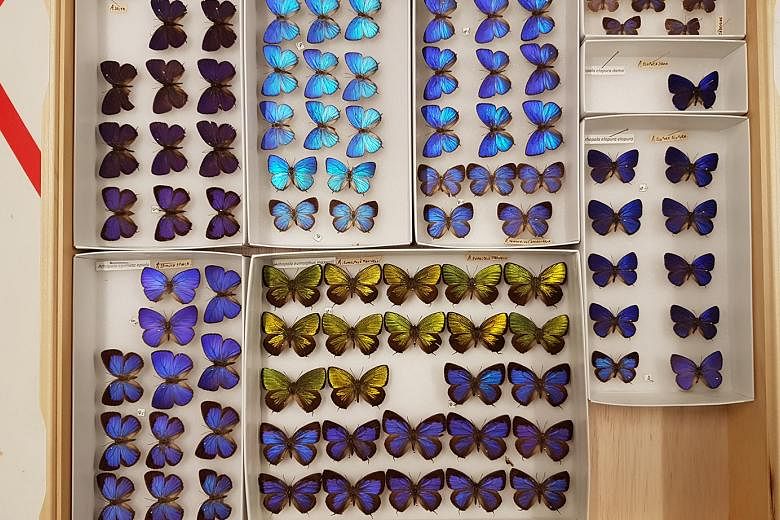The rich and diverse butterflies of Singapore and Peninsular Malaysia now have a spot on the world map.
More than 12,700 butterfly specimens from over 970 species native to the region have been immortalised in the virtual world, after their images and information were put online in the Global Biodiversity Information Facility, a free international biodiversity database.
The specimens, preserved at the Lee Kong Chian Natural History Museum (LKCNHM), were collected from various locations in Singapore and Peninsular Malaysia between 1936 and 1998, and some of the species are extinct or very rare.
An online map points out where each specimen was found.
Making the collection freely accessible on the Internet will bridge the gap between historical data and current knowledge of butterfly species in the region and also benefit scientists in their research, said entomologist Hwang Wei Song, who led the 16-month-long project.
For instance, information about their distribution could provide insights for conservation policies.
Dr Hwang also noted that butterfly species from the region are under-represented in global databases, even though the region has a larger diversity of the winged insect, at around 1,200 species, compared with Europe, which has 496.
"European institutions have been digitising their collections much earlier than us," said Dr Hwang, who is one of the museum's insect collection curators.
Singapore and Peninsular Malaysia sit on the Sundaland biodiversity hot spot, one of the biologically richest places on earth. "In the tropical climate, you have a lot more complexity within the ecosystem in tropical rainforests. That complexity allows for greater specialisation and, over time, that generates more species," he said.
Most of the species were collected between 1960 and 1990, a period when Singapore urbanised rapidly and habitats disappeared.
"With these historical records online, scientists can do comparative studies on how widespread certain species used to be, trace over time the decline of species now extinct, and even identify suitable populations for re-introduction of those species," Dr Hwang added.
By 1990, 114 butterfly species were extinct in Singapore.
Ecologist and conservation biologist Anuj Jain said: "Being able to digitally see what species we had in the past and have now lost in Singapore can be a powerful way to raise awareness among the public about the historic loss of natural habitats here."
The LKCNHM, which holds the nation's largest insect collection, has another 12,000 butterfly specimens to take online.
Plans are also under way to digitise its stick insect specimens.
Dr Hwang said: "The museum has a good representation of stick insect diversity within South-east Asia, and this region has the highest diversity of stick insects in the world."


